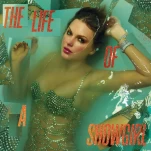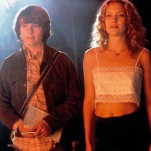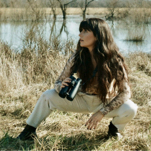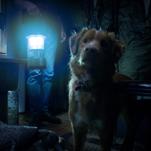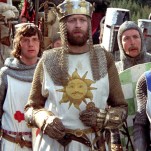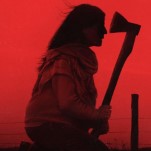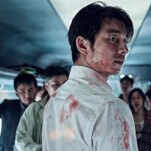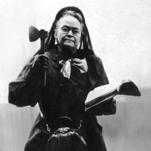Ranking Every Film Version of Little Women
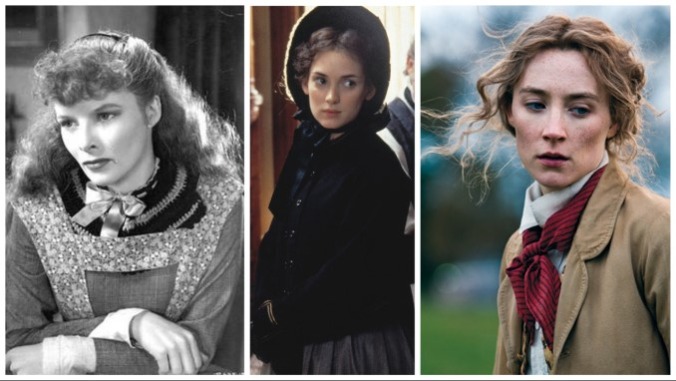
Since its publication in the late 1860s, Louisa May Alcott’s Little Women has been an endless source of inspiration for generations of filmmakers. The novel has been mined for a cinematic story time and time again, and each adaptation reveals the preoccupations of the society in which it was produced. From a focus on family and the military to a focus on career aspirations, every generation has its own version of the March family that speaks to them in a way no other version could. Of the seven feature film adaptations, five films ranging from the 1930s right up to the late 2010s are currently available to watch (the 1917 and 1918 silent film adaptations are considered lost films), and with Christmas just around the corner, now feels like the perfect time to look back on the merits—and faults—of each iteration of this beloved Christmas story.
Note: There are also numerous miniseries and TV versions of the March family story, even including several anime adaptations, but for the purposes of this piece we’re considering only the feature films.
5. Little Women (2018)
Director: Clare Niederpruem
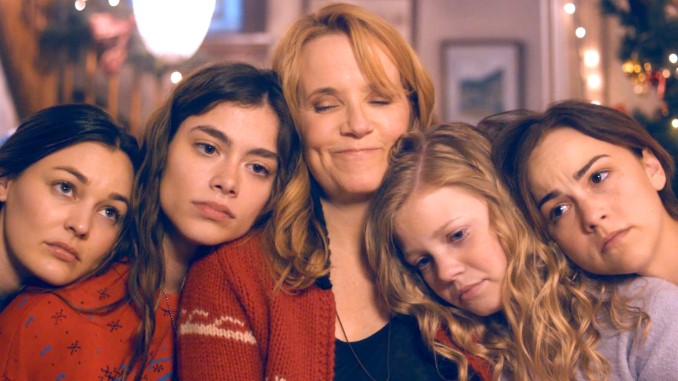
The first entry in this list is a modern reimagining of Alcott’s novel made to celebrate the 150th anniversary of its publication. As far as adaptations go, this one feels more like something you’d find on the Hallmark channel than a classic adaptation of a beloved novel. The film is set sometime in the mid-2000s and sees the March sisters as high school students in modern America. It follows the familiar beats of the novel—Jo (Sarah Davenport) dreams of being a writer, rejects her best friend Laurie (Lucas Grabeel) and loses her sister to illness—but fails to dig deeper than surface level tropes. Rather than thoughtfully adapting these characters to suit a modern setting, the March sisters are relegated to superficial stereotypes. Beth (Allie Jennings) is feeble and quiet, Amy (Elise Jones, Taylor Ashley Murphy) is juvenile and shallow, Meg (Melanie Stone) barely has any distinguishable character traits at all. Jo is a cliché tomboy who rails against femininity by wearing jeans and sneakers instead of dresses and heels, and shows very little affection toward any of her sisters who aren’t Beth. You half-expect her to pop up in a scene wearing a shirt with the word ‘FEMINIST’ emblazoned across it.
The most memorable aspect of this adaptation is perhaps the reunion of two former High School Musical castmates, Lucas Grabeel as Laurie and Bart Johnson as the March family patriarch. Neither give particularly noteworthy performances and Grabeel is especially ill-suited as Laurie (he possesses none of the charm required for such a role), but the memory of their all-singing, all-dancing past is humorous enough to distract from this otherwise cringe-worthy adaptation. The story suffers from its two-dimensional characters and its lack of interest in the complexity of its source material, but for younger audiences who maybe haven’t read the novel or seen previous adaptations, this surface-level adaptation could make for an easy if somewhat lazy way into Alcott’s novel.
4. Little Women (1949)
Director: Mervyn LeRoy
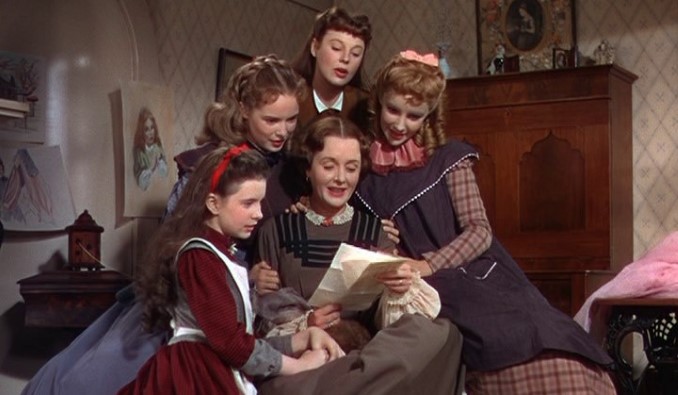
As the first color film of the novel, Mervyn LeRoy’s 1949 adaptation of Little Women is memorable for its breathtaking visuals. Filmed in glorious Technicolor and boasting an impressive cast of exciting Hollywood names—Elizabeth Taylor as Amy March, Janet Leigh as Meg, June Allyson as Jo—the film was a commercial success for MGM at a time when they were investing in more “family-centric” films. Filmed in a hazy, dream-like glow and accented with lush set design, this adaptation is beloved by many for its charming, cozy atmosphere. In his last ever screen role, Sir C. Aubrey Smith plays Mr. Lawrence with the perfect balance of austerity and wholesomeness. His portrayal of Mr. Lawrence’s fondness of Beth—here quite a bit younger than she is in the novel due to the casting of an older Taylor as Amy—is one of the most memorable aspects of the film. This film also marked the American film debut of Italian actor Rosanno Brazzi as Professor Bhaer; Brazzi would go on to star in films like South Pacific and The Italian Job. The casting of a young, handsome new actor in this role feels like a direct attempt to make Jo’s partnership with Professor Bhaer at the end of the story more palatable to audiences who have opposed the pairing since Alcott published the second volume of her novel in 1869.
Despite the positive reception of the actors, the actresses in this version didn’t fare quite so well. Allyson’s portrayal of Jo was poorly received and was described as being too brash for audiences who had already fallen in love with Katharine Hepburn’s lively interpretation of the character 16 years prior (more on that later). In this film, Jo lacks the kind of sensitivity she possesses in the novel. Instead, she is consistently brassy and assertive, and Allyson’s performance was seen as less persuasive than her predecessor. Still, the film’s preoccupation with the importance of military service proved affirming for audiences still recovering from the effects of World War II.
3. Little Women (1933)
Director: George Cukor

George Cukor directed the first sound adaptation of Alcott’s novel, and even as the oldest adaptation of the novel that is still available to watch, it is absolutely worth seeking out. If this ranking was based solely on the best portrayals of Jo March from novel to screen, then this film would easily take second place, if not first. Katharine Hepburn captures the vivacity at the heart of Jo’s character in a way few other actresses have, and with a brand new arena of sound to play with, she makes her mark on the character with some unforgettable line deliveries. Despite being in her mid-20s when cast as Jo, Hepburn captured her child-like energy with ease, playing her as rambunctious and constantly on the move. For much of the film Jo can be seen bounding over fences, climbing walls and swinging from trees. Hepburn’s boisterous demeanor is balanced by the sensitivity that she injects into the character. Her portrayal of Jo’s wide-eyed curiosity about the world makes for a performance so magnetic that it’s no wonder that every Jo to come afterwards would live in her shadow.
Unfortunately, Hepburn’s energy isn’t matched by Douglass Montgomery as Laurie (whose performance is bland and uninspiring), or Paul Lukas as Professor Fritz Bhaer (who is so paternal in his interactions with Jo that it feels downright wrong to see them embrace as a couple at the end of the film). But Jo’s relationship with these men provides insight into the preoccupations of the time. The treatment of women in the early 20th century wasn’t all that different from the treatment of women in the late 19th, and so this version of Jo grapples with the constraints of her gender with much the same fervor as Aclott’s character in the novel. She rejects the rules of elegant society and promises to always engage in acts of so-called boyish behavior. When she is denied the chance to accompany Aunt March (Edna May Oliver) in Europe, it is presented as a punishment for her coarse behavior, which is supposedly ill-fitting of a woman in high society. Her struggle to find her place in the world as a woman was no doubt relatable to audiences who were in the midst of renegotiating a woman’s place in society after the First World War. Memorable moments from this adaptation include Joan Bennett as Amy March standing in front of a classroom with a sign around her neck that reads “I AM ASHAMED OF MYSELF,” and Jean Parker as a sickly Beth, emotionally delivering the line, “But Jo, I think I’ll be homesick for you even in heaven.”
2. Little Women (1994)
Director: Gillian Armstrong
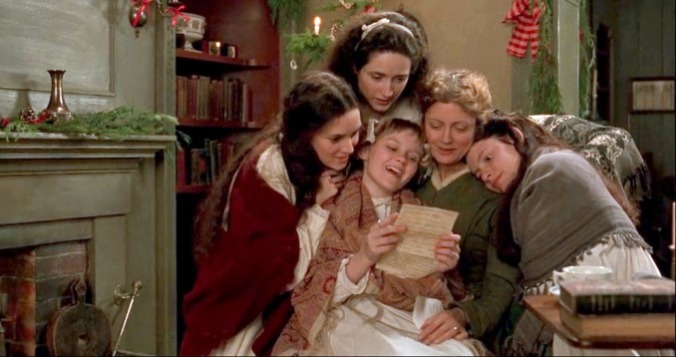
30 years after its release, Gillian Armstrong’s adaptation of Little Women is still cherished as a fan favorite. Released in the middle of the 1990s era of “girl power,” this film was fittingly directed, produced, and written by a whole host of women adapting a novel written by a woman for a film with a cast that largely consisted of women. On paper, it should have been an easy goal, but producer Denise Di Novi later admitted that at the time, it was almost impossible to secure funding for female-driven films. The only way to get studios on their side was to cast Hollywood darling Winona Ryder in the lead role, and so they did.
Ryder’s Jo is reminiscent of Hepburn’s—both are ungainly and loud, constantly itching to kick up a fuss and make a statement. But this version of Jo is far more interested in her career than previous depictions. Though previous adaptations have Jo speak about writing and end their films with a finished manuscript, this is the first film where Jo is actually seen writing—and on multiple occasions at that. Jo is constantly scribbling away on parchment after parchment, her hands perennially stained by the ink blots of her leaking pen. The only person to match her intellectual curiosity is Professor Bhaer (Gabriel Byrne), who has once again returned to a novel-accurate older age. Admittedly, as a child I balked at the image of such a mature looking Professor next to the baby-faced Winona Ryder. But over time I’ve grown to appreciate the gentleness in Byrne’s performance that sets his portrayal of the professor apart from his predecessors. As opposed to the somewhat patronizing tone of previous Bhaers, Byrne plays his version with a certain vulnerability. He doesn’t seek to teach Jo about the ways of the world, but rather challenges her to improve her writing and supports her ambition to become a successful author.
Christian Bale’s iconic performance as lovable rogue Teddy Lawrence laid the groundwork for the Lauries of Christmas future, and traces of his performance can be found in Timothée Chalamet’s later portrayal of the character in Greta Gerwig’s 2019 film. Bale is all cheeky smiles and inquisitive eyes, but, like in previous adaptations, his relationship with Amy comes across as a jarring response to his being rejected by Jo. It’s hard to believe in their union when Laurie explicitly states that he is attracted to Amy simply because he has always believed he belonged in the March family—not exactly the most romantic of proposals. But questionable rebounds aside, his performance, alongside a spirited Kirsten Dunst as young Amy and an updated interpretation of Marmee that has Susan Sarandon take on a much less subdued role than previous versions, helps to build the heartwarming tone of the film set by Ryder’s lead performance and Armstrong’s direction.
1. Little Women (2019)
Director: Greta Gerwig
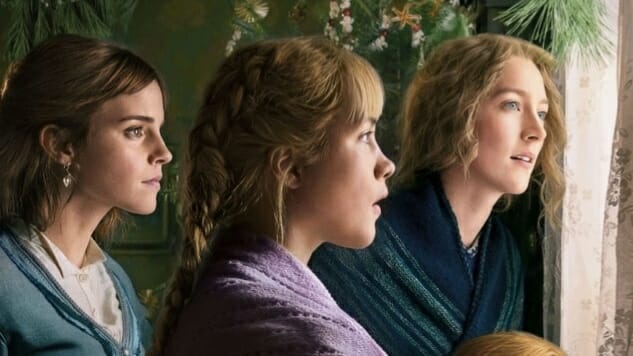
Unlike the adaptations that came before, Greta Gerwig’s Little Women does not open with Jo March as a child. Instead, the timeline jumps back and forth, weaving childhood memories into adult experiences. We begin with the adult Jo (Saoirse Ronan) as a writer in New York, haggling with Mr. Dashwood (Tracy Letts), an editor of a magazine who has agreed to publish one of her stories. Dashwood is a harsh critic—he disregards entire pages of Jo’s writing and states that the work will need to be heavily edited before reaching print. Eventually, he agrees to pay her for her work, and Jo exits the building with a hop in her step and a grin on her face. She may be underpaid as a female writer, but her work is published nonetheless and there’s no doubt about it: She is a writer.
Like Armstrong’s film 25 years prior, Gerwig cantered her adaptation of Little Women around Jo’s aspirations to be a writer. Opening her film with Jo being paid for her work is a purposeful choice: Each iteration of this story has focused on a different aspect of the novel, and Gerwig’s film is hyper-focused on Jo’s agency, both as a writer and as a woman. As a writer, Jo is constantly fighting for the right to be taken seriously and negotiates compensation for her work. As a woman, Jo lambasts a patriarchal society that suggests that love is all a woman is fit for, but admits that she cannot bear to be alone. Loneliness, in Gerwig’s film, isn’t just the absence of a romantic partner, but the absence of love in all its entirety. When Jo exclaims “I’m so lonely!”, she does so in the wake of her sister Beth’s (Eliza Scanlen) passing, in the empty space of a childhood attic that was once filled with the laughter of the March sisters. It isn’t just a romantic partner that she longs for, but also the love and safety of family that she once knew in her childhood.
Gerwig’s film highlights the great importance of family in Jo’s life and captures the unbearable ache of growing older and looking back on childhood through rose-tinted glasses (the scenes in Jo’s past are literally colored in a golden hue where the present day is captured in melancholic shades of blue). Although Jo views marriage as a threat to her freedom, a growing bond with a professor (Louis Garrel) at the boarding house where she teaches opens her mind to the possibility of a marriage that does not impede on her liberty. Just like in the 1949 adaptation, this version of Bhaer is aged down to make his relationship with Jo much more appealing, and rather than being a dominating or paternal male figure, Professor Bhaer is a sounding board against which Jo is able to bounce her ideas.
In Gerwig’s vision, Jo’s agency remains her own right down to the film’s final moments. Though she may be forced to compromise on the ending of her novel (just as Alcott was forced to have Jo marry at the end of her novel against her will), Jo fights to retain ownership and be fairly compensated for her work in a move that feels entirely modern for a period piece (and one that mirrors Alcott’s own move to retain the copyright to her own work). She is not introduced to the arts by a man, but rather nurtures her own interest in the field on her own terms. She writes about her childhood not because she is advised to, but as a way of preserving the memory of a childhood spent fighting dragons with her sisters in the dusty attic of the March family home. Gerwig’s dedicated pursuit to protecting Jo’s agency feels like a love letter to Louisa May Alcott’s own pursuit of agency as a writer. It may not be entirely faithful to the source material, but Greta Gerwig’s Little Women is a magnificent accomplishment that pays homage to its writer and refuses to compromise on the novel’s core belief of a woman’s right to choose—and own—her destiny.
Nadira Begum is a freelance film critic and culture writer based in the UK. To see her talk endlessly about film, TV, and her love of vampires, you can follow her on Twitter (@nadirawrites) or Instagram (@iamnadirabegum).
